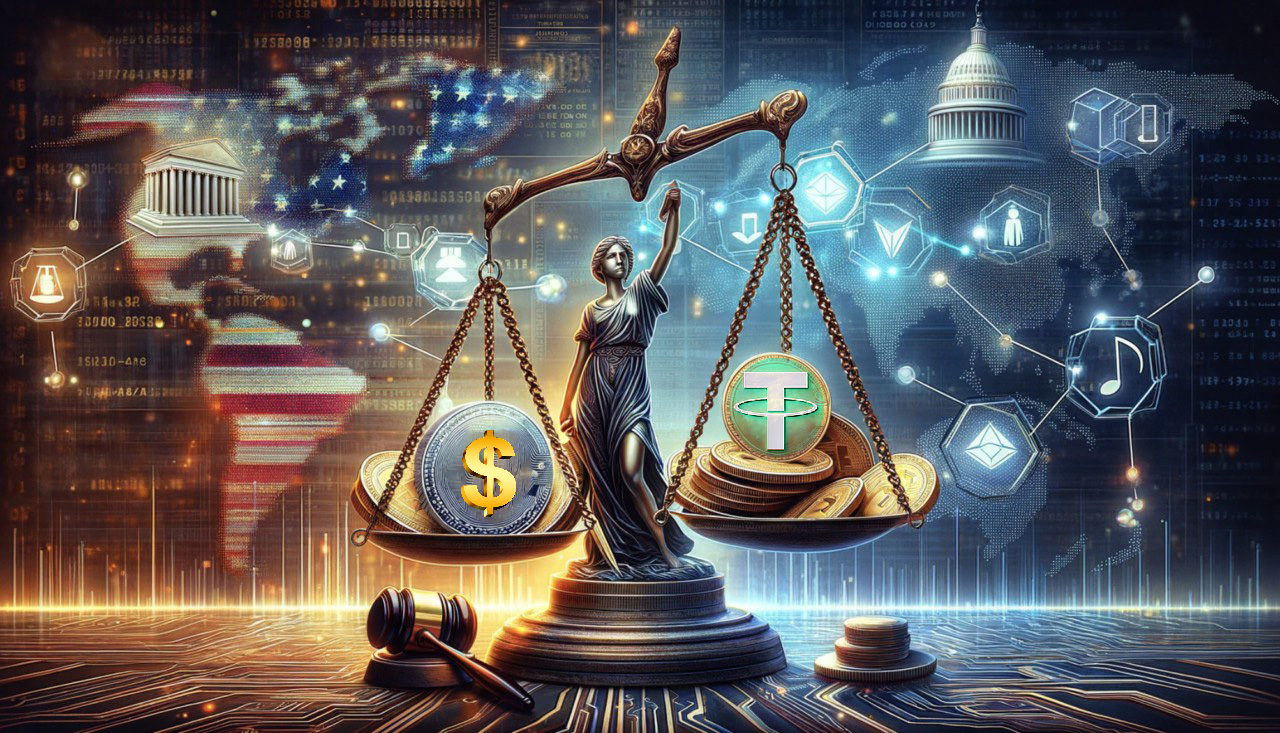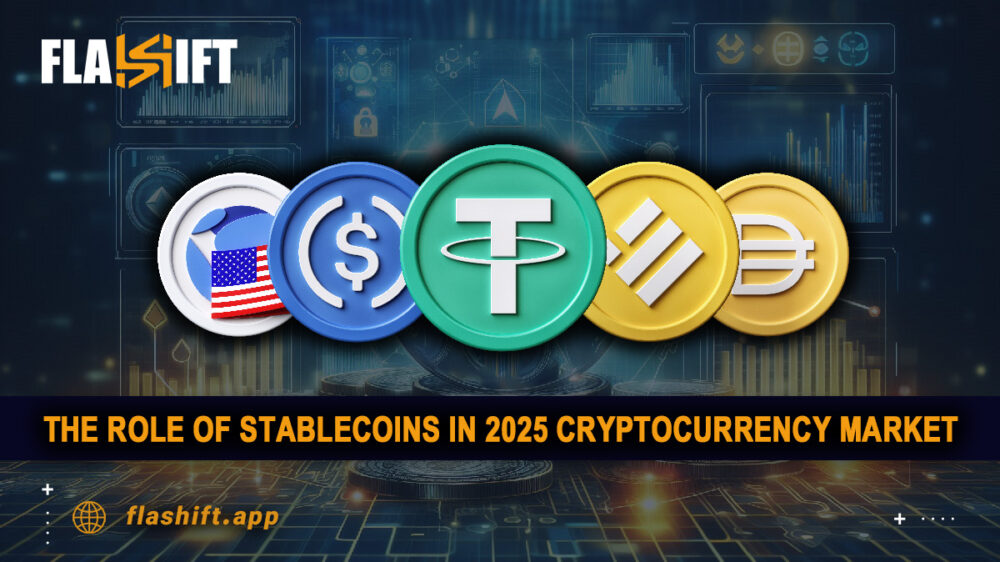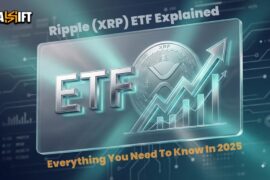Stablecoins in 2025 have become an important component of the cryptocurrency ecosystem, offering stability in prices and reducing the difference between property in fiat and digital form. As we approach 2025, expanding their role, running liquidity in decentralized finance (DEFI), facilitating border payments, and promoting the adoption of the mainstream of blockchain-based payments. Regulatory progress and technological innovation are shaping their development, affecting financial institutions, investors, and policymakers.
With increasing integration in world finance, stablecoins are revolutionizing in online payment, improving access, maximizing efficiency, and promoting security in a more digitized world economy.
What is Stablecoin?
A stablecoin is a type of cryptocurrency designed to maintain a stable value by pegging its price to a reserve asset, such as a fiat currency (e.g., USD, EUR), commodities (e.g., gold), or a basket of assets. Unlike volatile cryptocurrencies like Bitcoin and Ethereum, stablecoins provide price stability, making them useful for payments, remittances, trading, and decentralized finance (DeFi).
Types of Stablecoins and Their Mechanisms

Stablecoins are categorized based on the mechanism they use to maintain price stability. The three main types are:
-
Fiat-Collateralized Stablecoins
These stablecoins are backed by traditional fiat currencies like the U.S. dollar, euro, or other assets held in reserves by a centralized entity (e.g., banks or financial institutions). Each stablecoin is typically backed 1:1 by the reserve, ensuring stability.
Examples: USDT (Tether), USDC (USD Coin), BUSD (Binance USD).
Pros: High stability, widely accepted, easy to understand.
Cons: Centralized control, regulatory scrutiny, dependence on third parties.
-
Crypto-Collateralized Stablecoins
These stablecoins are backed by other cryptocurrencies, often overcollateralized to absorb price fluctuations. Smart contracts manage issuance and liquidation to maintain stability.
Examples: DAI (backed by ETH and other assets on MakerDAO).
Pros: Decentralized, transparent, no reliance on fiat banking systems.
Cons: More complex, susceptible to extreme crypto market volatility.
-
Algorithmic Stablecoins
Instead of being backed by collateral, algorithmic stablecoins use supply and demand mechanisms to maintain their peg. Smart contracts automatically increase or decrease the coin supply to stabilize its price.
Examples: FRAX (partially algorithmic), AMPL (Ampleforth), previously UST (TerraUSD).
Pros: Fully decentralized, no reliance on traditional financial assets.
Cons: High risk of de-pegging, market confidence-dependent, historically unstable.
Each type of stablecoin has its own strengths and weaknesses, and their role in the crypto ecosystem depends on factors like regulatory developments, adoption, and technological advancements.
Read More: How to Grow Your Wealth with Cryptocurrency: A Beginner’s Guide for 2025
Most Popular Stablecoins in 2025
Stablecoins in 2025, remain an essential part of the crypto ecosystem, powering everything from decentralized finance to private cross-chain swaps. Whether you’re holding for stability or using them as a gateway between tokens, the following stablecoins dominate the market:
| Name | Peg | Issuer | Network Support | Flashift Support |
|---|---|---|---|---|
|
USDT |
USD | Tether | Ethereum, TRON, more | Yes |
|
USDC |
USD | Circle | Ethereum, Solana, Base | Yes |
|
DAI |
USD | MakerDAO | Ethereum, L2s | Yes |
|
EURT |
EUR | Tether | Ethereum | Yes |
|
GHO |
USD | Aave | Ethereum, zkSync | Yes |
All these stablecoins are available onFlashift for fast, anonymous swaps, no KYC required.
Advantages of Stablecoins in 2025

-
Price Stability
One of the main benefits of stablecoins is their price stability. Unlike other cryptocurrency, which may experience a large price ups and downs, stablecoin is underestimated for assets such as US dollars or gold, providing a reliable value. In 2025, this stability allows businesses and individuals to use stablecoins for daily transactions, as the value is less concerned about sudden drops. It makes stablecoin ideal to serve as a means of exchanging and storing value.
-
Lower Transaction Costs
Stablecoins provide a more cost-effective option for financial transactions than traditional payment systems. In 2025, the cost of transferring stablecoin is much lower than bank transfer or remittance services, especially for border cross transactions. By reducing the requirement of middlemen and streamlining the disposal process, stablecoin enable rapid and cheap transfer, which is particularly valuable for individuals engaged in businesses and international trade or sending remittance.
-
Faster Cross-Border Transactions
Stablecoins enable immediate cross-border transfers, something that is especially invaluable for cross-border transactions in 2025. Cross-border transfers via traditional banking systems may take days to settle, but stablecoins can be settled and transferred within minutes or even seconds. It not only enhances the efficiency of cross-border trade but also provides an ideal solution to individuals remitting money abroad or businesses operating in multiple countries, making the financial system more responsive.
-
Increased Financial Inclusion
In regions where there is no conventional banking infrastructure, stablecoins have the promise of delivering financial inclusion. With a digital equivalent of fluctuating or nonexistent local currencies, stablecoins empower individuals who don’t have bank access to save and transfer value. Stablecoins continue to be a vital tool for individuals living in developing nations in 2025 to partake in the global economy, save, and make payments digitally, circumventing the constraints left by conventional banking infrastructures.
-
Integration with Decentralized Finance (DeFi)
Stablecoins are integrated into the rapid defi ecosystem, providing users access to lending, borrowing and yield-farming opportunities without the risks associated with volatile cryptocurrency market. In 2025, Stablecoins remain a head in the defi protocol due to their stability, allowing users to lock in value without worrying about swings. It opens the path to give decentralized lending and protect platforms, providing individuals with high yields than traditional finance products.
-
Regulatory Compliance and Transparency
Stablecoins are often designed with regulatory compliance in mind, making them easier to integrate into existing financial systems. In 2025, as governments and regulators develop clearer guidelines for digital currencies, stablecoins are better positioned to meet anti-money laundering (AML) and know-your-customer (KYC) requirements. This ensures that stablecoins can be used safely in regulated environments, providing a level of trust and transparency that enhances their adoption across both the private and public sectors.
Important Use Cases of Stablecoins in 2025
Stablecoins in 2025 are a vital cross-border payments tool, offering fast and cheap transactions without the delay and cost of the traditional banking system. It is especially helpful for foreign trade and international remittances.
Stablecoins are a safe asset for borrowing, lending, and interest returns in Decentralized Finance (DeFi), making DeFi simpler and safer for consumers looking for stable returns without the volatility of other cryptocurrencies. For online payments and e-commerce, stablecoins provide a safe payment method for goods and services with merchants being insulated from price volatility and consumers guaranteed instant, frictionless payments.
Financial inclusion is also a key use case, as stablecoins provide people in underbanked markets with access to digital finance outside of incumbent banks. They enable safe savings and transactions, creating new opportunities for the underbanked and unbanked. Stablecoins are also employed as a hedge against currency risk. In high-inflation or currency-devaluation environments, they offer a stable store of value, protecting users’ wealth from local economic instability.
Lastly, stablecoins are embedded in programmable money and smart contracts so that automated payments and contracts are enabled across industries such as insurance, supply chains, and property, making things more efficient and less dependent on intermediaries.
Regulatory Perspectives on Stablecoins in 2025

Stablecoins in 2025 come under greater regulatory scrutiny as governments seek to bring security, stability, and compliance into the financial systems. The primary focus is bringing transparency and reserve backing, with regulators seeking open audits and collateralization so that stablecoins hold their pegged value. Anti-money laundering (AML) and know-your-customer (KYC) compliance are also the biggest focuses. Regulators demand that stablecoin platforms identify users to make sure stablecoins are not used for illegal purposes like money laundering, within legal systems.
Another issue is the advent of central bank digital currencies (CBDCs). The government can raise regulations around stablecoins issued by private companies so that monetary policy remains within the government’s grip, especially since CBDCs could become a potential threat. Consumer protection is also an issue, where regulators are searching for mechanisms to ensure the assets of users are protected in the case of insolvency or failure by the issuer, perhaps by using insurance or cover for holders of stablecoins.
Lastly, since stablecoins are international in scope, global cooperation is required not to facilitate regulatory arbitrage. Global institutions are making every effort to create harmonized standards in a bid to manage risks and facilitate innovation.
Swap USDT-ERC20 to USDT-TRC20 now!
Conclusion: The Role of Stablecoins in the 2025 Crypto Market
Stablecoins in 2025 continue to be the focal point of the crypto landscape, a bridge between old and new finance. Their stability, accessibility, and simplicity of being integrated into DeFi render them essential to individuals who need assured value within a world of otherwise uncertainty. Stablecoins facilitate faster, cheaper cross-border payments, greater financial inclusion, and new means for consumers and businesses to participate in the digital economy. With more mature regulatory frameworks, stablecoins will see even broader adoption, driving innovation without sacrificing trust and security. Overall, stablecoins are likely to be a cornerstone of the crypto ecosystem, offering stability and serving as a bridge between fiat and digital money.
FAQ
- Why are stablecoins still relevant in the 2025 crypto market?
Stablecoins offer a dependable store of value and medium of exchange, bridging the gap between volatile cryptocurrencies and traditional fiat. Their stability makes them essential for both crypto investors and everyday users in a rapidly evolving digital economy.
- How do stablecoins help with regulatory challenges in 2025?
With increasing regulatory clarity, stablecoins comply with financial rules, including KYC and AML regulations. Their transparent, asset-backed nature helps build trust, easing adoption by both individuals and businesses while meeting government standards.
- Can stablecoins be used for more than just transactions in 2025?
Yes, stablecoins are integral to decentralized finance (DeFi), where they’re used for lending, borrowing, and earning yields, as well as automating processes through smart contracts. They also facilitate tokenized assets and insurance products.
- How do stablecoins address the issue of financial inclusion?
Stablecoins provide access to digital financial services for people in regions without reliable banking infrastructure. Users can store value, make transactions, and participate in the global economy, even without a traditional bank account.
- Are stablecoins likely to replace traditional currencies?
While stablecoins are growing in use, they are unlikely to fully replace traditional currencies. Instead, they are complementing them, especially for digital transactions, cross-border payments, and financial products, rather than serving as a wholesale replacement.







